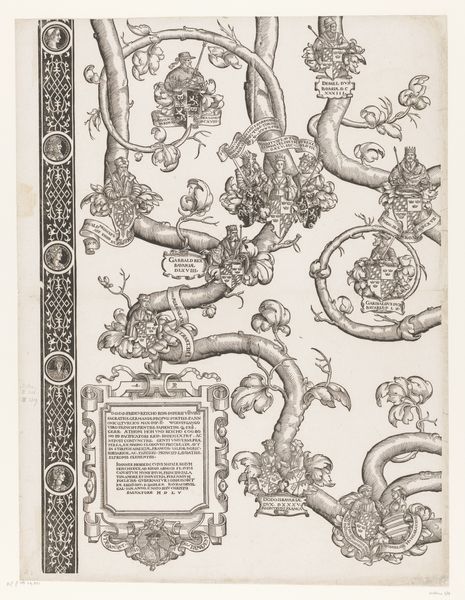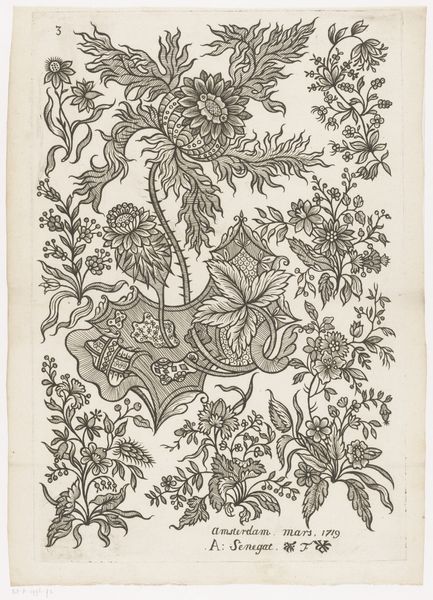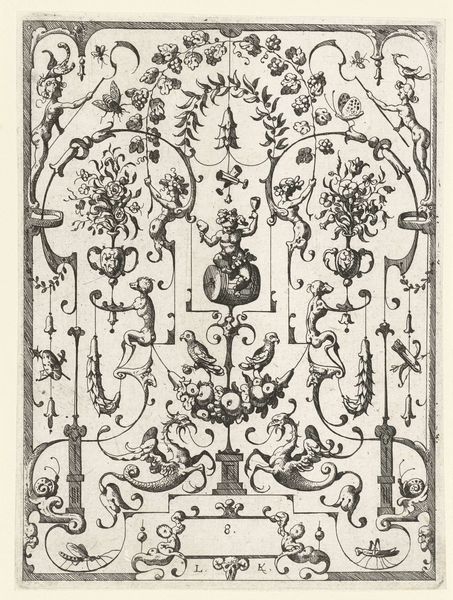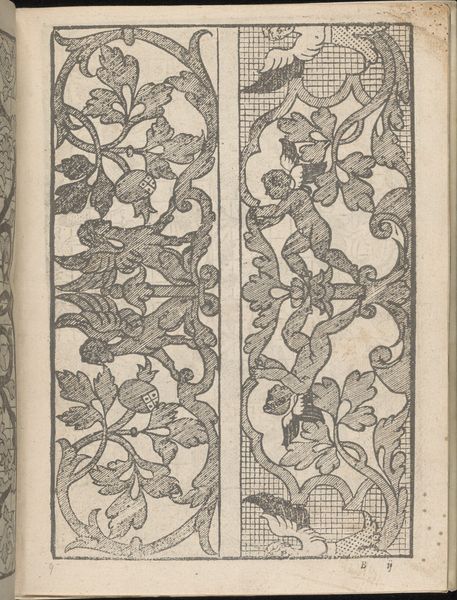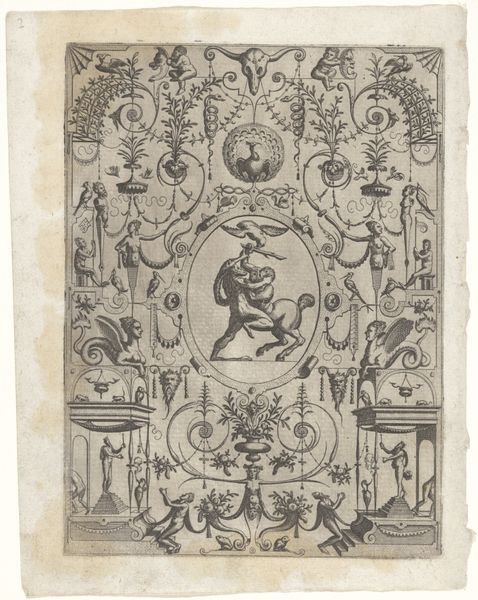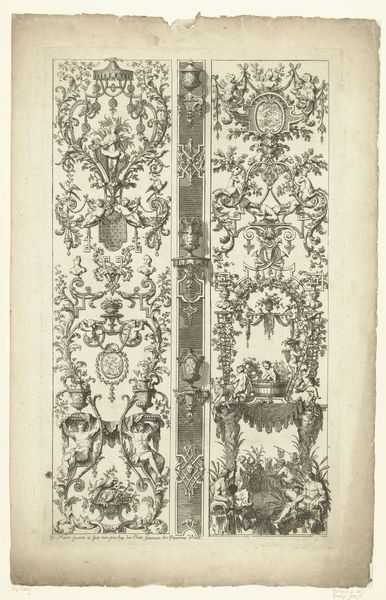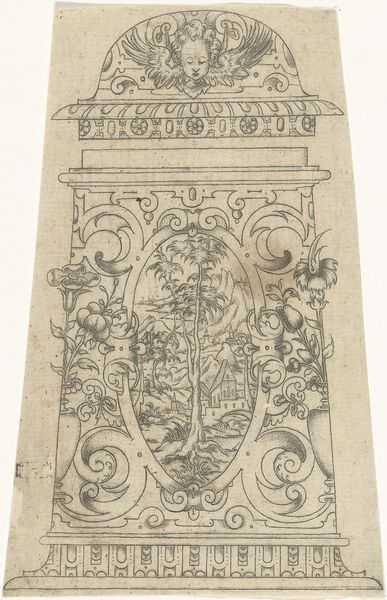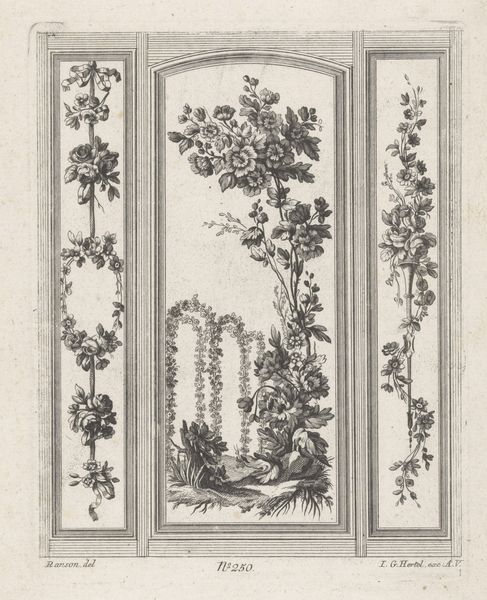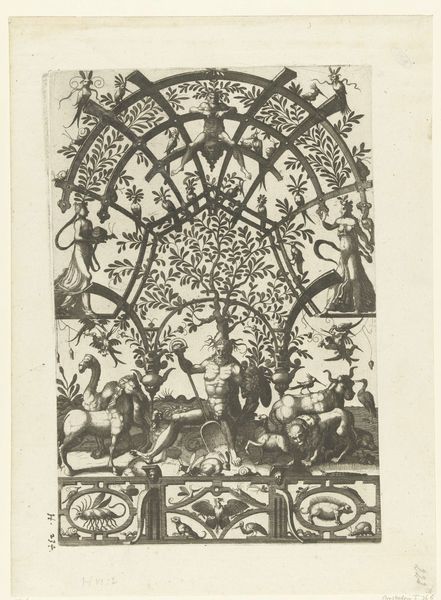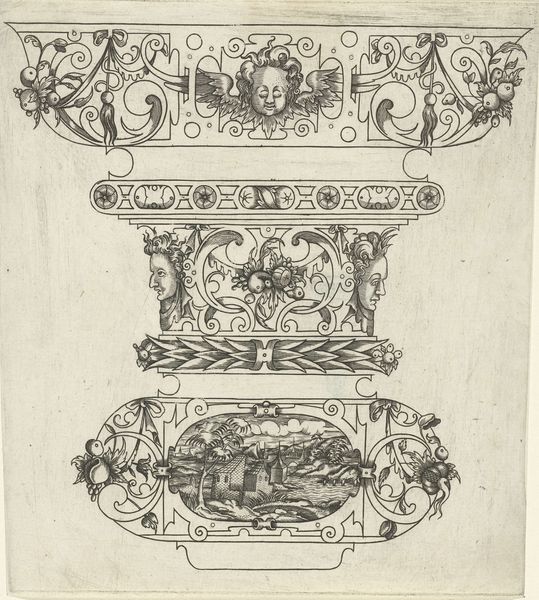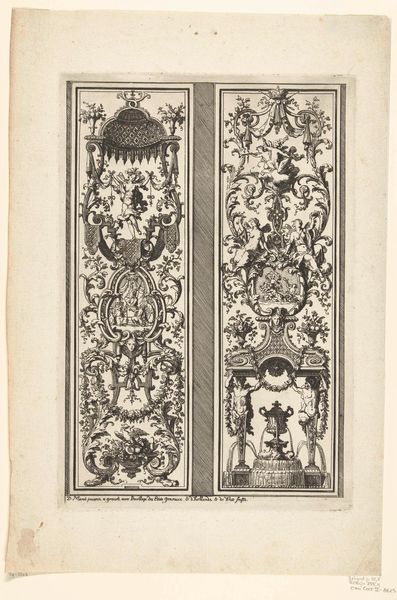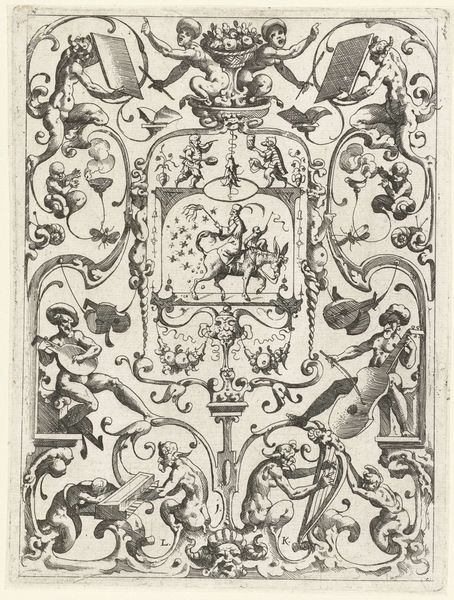
Stamboom van Frederik en Ottheinrich van Palts-Neuburg (plaat 6) 1535 - 1594
0:00
0:00
drawing, print, paper, pen, engraving
#
portrait
#
drawing
# print
#
pen illustration
#
pen sketch
#
old engraving style
#
figuration
#
paper
#
geometric
#
pen-ink sketch
#
line
#
pen work
#
sketchbook drawing
#
pen
#
history-painting
#
northern-renaissance
#
engraving
Dimensions: height 625 mm, width 453 mm
Copyright: Rijks Museum: Open Domain
Curator: This engraving, titled *Stamboom van Frederik en Ottheinrich van Palts-Neuburg*, a genealogical tree, produced between 1535 and 1594, is fascinating, isn't it? The Rijksmuseum holds this print made by Jakob Clauser. What strikes you most about it? Editor: It's incredibly intricate. I'm drawn to the detailed linework and the somewhat archaic style. All the family members included are interesting, however I wonder what function this print served? Curator: A powerful family commission and record-keeping practice with political implications. What is not immediately available in the tree structure of family lines is gender power and class status of each figure in the family line. Can you read some of the labels? Editor: It appears that it details the lineage of Frederick and Ottheinrich of Palatinate-Neuburg, portraying their ancestors, the genealogical record bolstering their claim to power through constructed history. What are some potential underlying, critical assumptions, or biases could be embedded within it? Curator: Consider the patrons, Frederick and Ottheinrich, commissioning their legacy solidified in ink. The emphasis is predictably placed on direct, male lineage to validate their position within a strict gendered hierarchy of patriarchal power. The format and its selective content would subtly emphasize perceived legitimacy over possibly disruptive historical truths. Editor: I see what you mean. It’s less an objective family history and more of a calculated assertion of authority using visual culture. Do you think then, that portraits could only have been made of prominent family members, potentially neglecting many others of lower status, that were perhaps just as essential to continuing this lineage? Curator: Absolutely. Even if those excluded from the piece were also included they would very likely occupy a marginal visual position within it. By analyzing such pieces critically, we can reveal power dynamics inherent in historical representations, prompting questions about the stories that aren’t being told. Editor: I hadn’t considered the absences and intentional selections before. This makes me look at it, and similar art of nobility, in an entirely different light. Curator: Indeed, art provides insight, especially when considering both overt messaging and omissions.
Comments
No comments
Be the first to comment and join the conversation on the ultimate creative platform.
